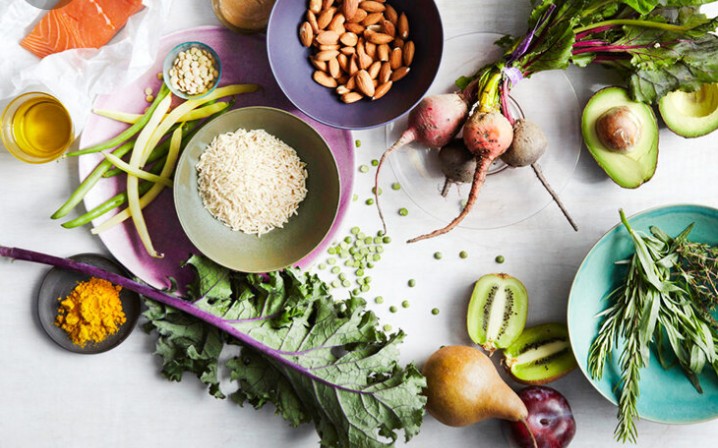|
Getting your Trinity Audio player ready...
|
By Joyce Mukucha
The United Nations (UN)’s benchmark food and commodity prices index rose sharply on average through 2021, compared with the previous year, the new data by Food and Agriculture Organization (FAO) has revealed last week.
The FAO’s Food Price Index(FFPI) which tracks monthly changes in international prices averaged 125.7 points – a 28.1 per cent increase over 2020.
FAO Senior Economist Abdolreza Abbassian highlighted that normally, high prices are expected to ease as production increases to match demand.
This time, however, the consistently high cost of inputs, the ongoing global pandemic, and ever more volatile climatic conditions “leave little room for optimism about a return to more stable market conditions even in 2022.”
The data released by FAO shows that at the end of the year, world food prices fell slightly, as international prices for vegetable oils and sugar fell significantly.
It highlighted that the Food Price Index averaged 133.7 points, a 0.9 per cent decline from November, but was still up 23.1 per cent from the same month the year before. Only dairy posted a rise that month.
“Except for dairy, the values of all sub-indices encompassed by the FFPI registered monthly declines, with international prices of vegetable oils and sugar falling significantly month-on-month. For 2021 as a whole, the FFPI averaged 125.7 points, as much as 27.6 points (28.1 percent) above the previous year with all sub-indices averaging sharply higher than in the previous year,” FAO said.
That data further indicated that the Cereal Price Index also decreased 0.6 percent; for the full year, however, it reached its highest annual level since 2012, rising 27.2 percent whilst biggest gainers were maize, up 44.1 percent, and wheat, gaining 31.3 percent. One of the world’s other key staple foods, rice, lost 4 percent.
“The FAO Cereal Price Index averaged 140.5 points in December, down 0.9 points (0.6 percent) from November. Wheat export prices fell in December, amid improved supplies following harvests in the southern hemisphere and slowing demand. However, maize prices were firmer, underpinned by strong demand and concerns over persistent dryness in Brazil. While sorghum prices also rose, partly influenced by maize markets, barley quotations eased slightly.”
International rice prices, the data shows, also softened in December, as demand relapsed, and currencies weakened against the US dollar in various major suppliers.
For 2021 as a whole, the FAO Cereal Price Index averaged 131.2 points, up 28.0 points (27.2 percent) from 2020 and the highest annual average registered since 2012.
In 2021, maize and wheat prices were 44.1 and 31.3 percent higher than their respective 2020 averages, mostly on strong demand and tighter supplies, especially among major wheat exporters. Rice was the sole major cereal to register a decline in prices in 2021, with quotations falling on average 4.0 percent below 2020 levels.
“The weakness reflected ample exportable availabilities of rice, which heightened competition among suppliers and led them to seek to counter the impact of high freight costs and container shortages on demand by lowering prices,” FAO explained.
Regarding oil and sugar, the data revealed that the Vegetable Oil Price Index declined 3.3 percent in December, due to lower global import demand, that may be linked to concerns over the impact of rising COVID-19 cases, which have led to delays in the supply chain.
For the year as a whole, the Oil Index reached an all-time high, increasing 65.8 percent compared with 2020.
Another key staple, sugar, dropped by 3.1 percent last month from November, reaching a five-month low. For the year as a whole, the Sugar Price Index rose 29.8 percent, reaching its highest level since 2016.
“The FAO Vegetable Oil Price Index averaged 178.5 points in December, shedding 6.1 points (or 3.3 percent) from recent record highs. The decline was driven by weakening palm and sunflower oil prices, while soy and rapeseed oil values remained virtually unchanged month-on-month.”
FAO analysts said this shows concerns over the impact of the Omicron variant on global demand as well as a weaker Brazilian Real, combined with lower ethanol prices.
“International palm oil prices fell in December, primarily reflecting subdued global import demand amid concerns over the impact of rising COVID-19 cases. Meanwhile, international sunflower oil quotations were also weaker, reflecting demand rationing.
“By contrast, world soy and rapeseed oil prices maintained their strength, largely underpinned by, respectively, firm import demand primarily from India and protracted global supply tightness. For 2021 as a whole, the FAO Vegetable Oil Price Index averaged 164.8 points, up as much as 65.4 points (or 65.8 percent) from 2020 and marking an all-time annual high.”
For meat and dairy, the Meat Price Index was “broadly stable” in December, but rose 12.7 percent through the year as a whole.
According to FAO’s data, dairy was the only category where prices increased in the last month of the year, rising 1.8 percent on November, mostly because of lower milk production in Western Europe and Oceania.
“The FAO Dairy Price Index averaged 128.2 points in December, up 2.3 points (1.8 percent) from November and 19.0 points (17.4 percent) above its December 2020 value. In December, international quotations for butter and milk powders continued to increase, underpinned by high global import demand, coupled with tight export supplies, resulting from lower milk production in Western Europe and Oceania.”
Despite the low milk output, it has been highlighted, cheese production in Western Europe increased as producers preferred cheese over alternative dairy products, causing a marginal decline in cheese prices.
“In 2021, the FAO Dairy Price Index averaged 119.0 points, up 17.2 points (16.9 percent) from 2020, reflecting sustained import demand throughout the year, especially from Asia, and tight exportable supplies from the leading producing regions. Cheese prices declined marginally last month, but for the year overall, the Dairy Price Index averaged 16.9 per cent higher than 2020.”






